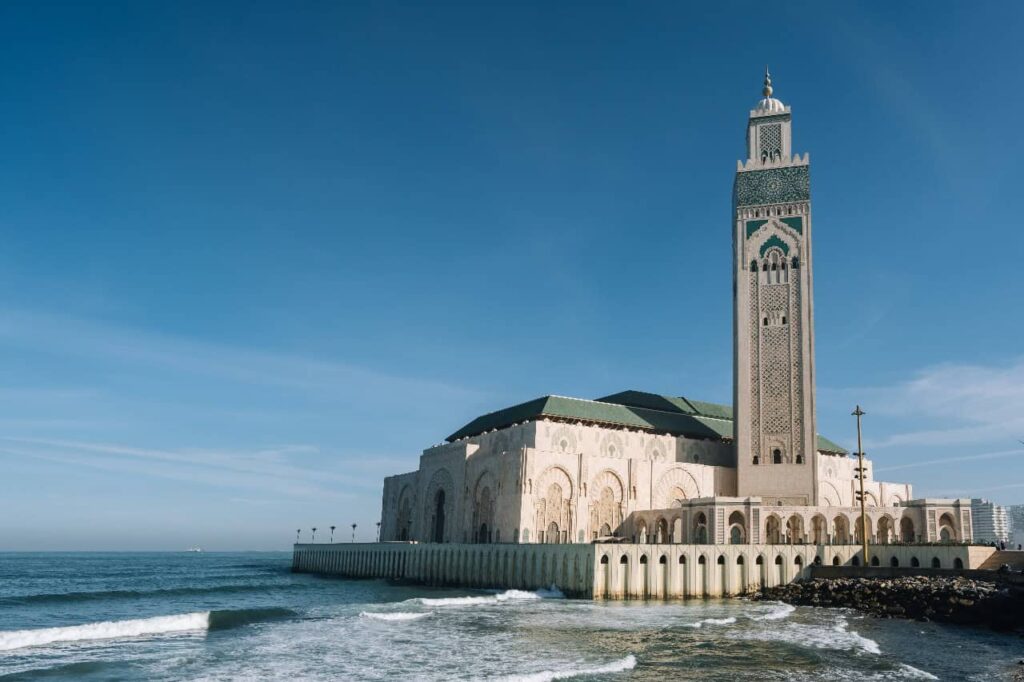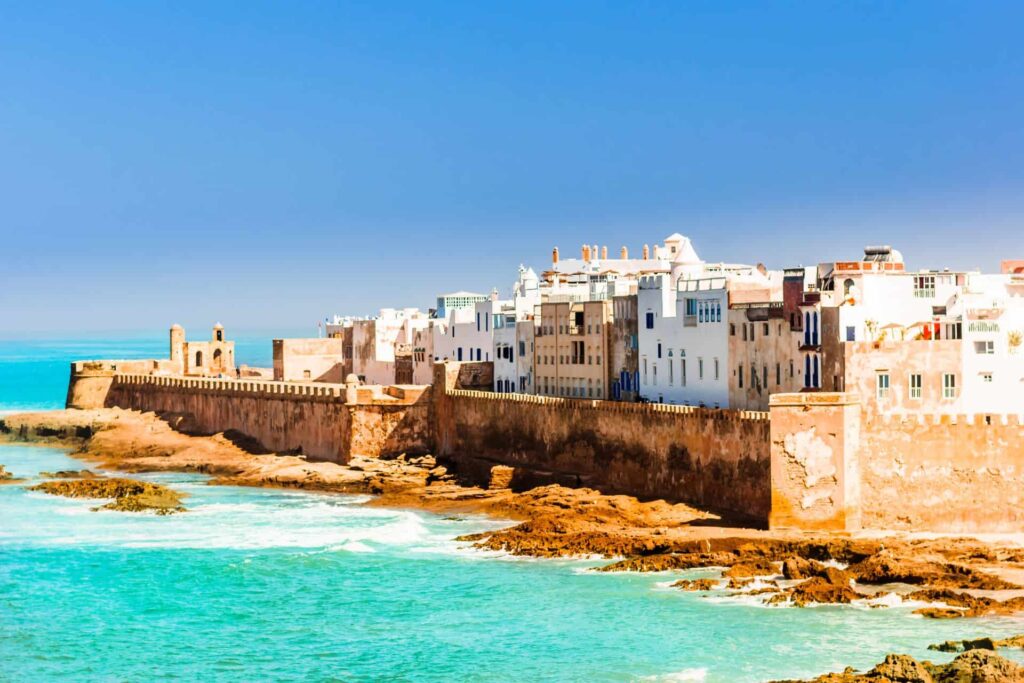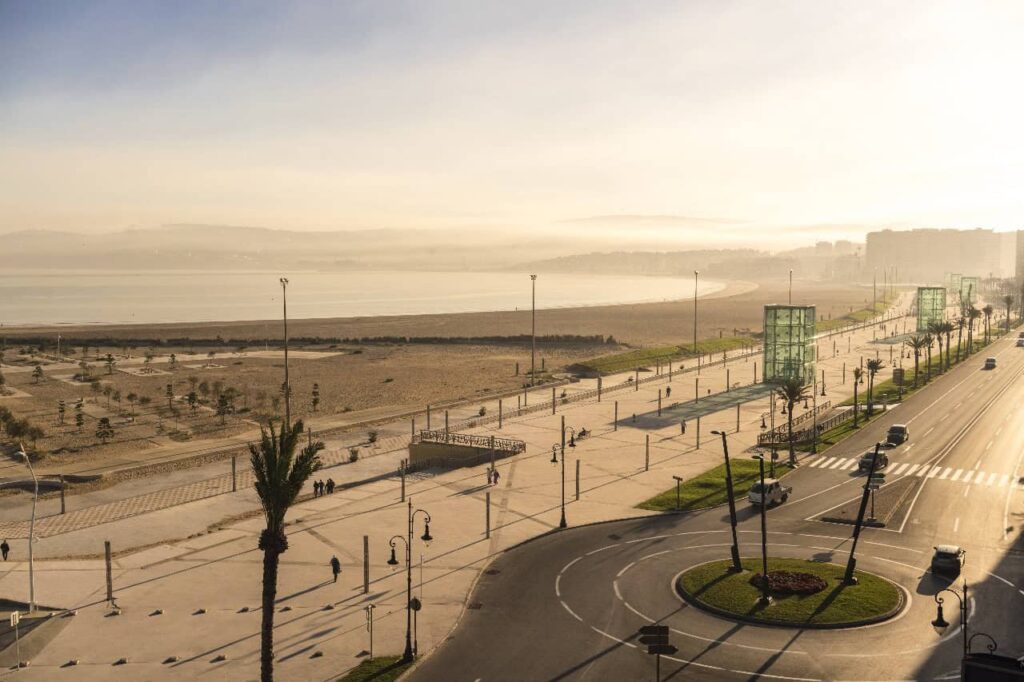When planning a trip to Morocco, choosing the best time to visit Morocco can significantly increase your experience. With its diverse landscapes, rich culture, and festivals, Morocco offers something unique in every season.
From the bustling souks of Marrakech to the serene deserts of the Sahara, each region showcases its charm throughout the year. This guide will help you navigate the best times to explore the country’s breathtaking scenery and enjoy its traditions.
What is the best month to go to Morocco?
The best time to visit Morocco is typically March or April. During these months, the weather is mild and pleasant, making it ideal for exploring both coastal and inland regions. Spring also brings blooming flowers and vibrant landscapes, enhancing the overall experience.
Additionally, tourist crowds are manageable, allowing for a more authentic visit. However, if you’re interested in specific activities like skiing in the Atlas Mountains, December to February might be preferable. Ultimately, the best time depends on your interests and the regions you plan to visit.
The best time to visit Morocco
The best time to visit Morocco this country typically falls between March and May, or September and November. During these months, the weather is pleasantly mild, allowing you to explore the diverse landscapes, rich culture, and bustling markets comfortably. Whether you’re trekking in the Atlas Mountains or wandering through the medinas, choosing the right season can make all the difference.
Weather in Morocco during the months of the year
January
In January, Morocco experiences a mix of mild and cool weather, depending on the region. Coastal areas like Casablanca and Rabat enjoy temperatures ranging from 10°C to 18°C (50°F to 64°F), with occasional rain. In the inland regions, such as Marrakech, temperatures are slightly warmer during the day, averaging around 14°C to 20°C (57°F to 68°F), but can drop to around 5°C (41°F) at night.
The Atlas Mountains are much colder, often blanketed in snow, making it a prime time for winter sports. Overall, January is a great month to explore Morocco’s diverse landscapes while enjoying relatively pleasant weather.
February
Morocco’s weather begins to warm up slightly as spring approaches. Coastal cities like Casablanca and Agadir see average temperatures ranging from 11°C to 19°C (52°F to 66°F), with occasional rainfall. Inland areas, including Marrakech, enjoy daytime temperatures between 15°C and 22°C (59°F to 72°F), but nighttime temperatures can drop to around 6°C (43°F).
The Atlas Mountains remain cold, with snow still present, attracting winter sports enthusiasts. Overall, February is a pleasant time to visit Morocco, offering a mix of mild weather and beautiful landscapes.

March
Morocco begins to experience the full arrival of spring, with warmer and more pleasant weather across the country. Coastal areas like Casablanca and Essaouira see temperatures ranging from 12°C to 20°C (54°F to 68°F), with less rainfall than in previous months. Inland cities such as Marrakech enjoy warmer days, with temperatures averaging between 17°C and 25°C (63°F to 77°F).
Nights can still be cool, dropping to around 8°C (46°F). The Atlas Mountains start to thaw, making it a great time for hiking and exploring the stunning landscapes. Overall, March is an ideal month for outdoor activities and experiencing Morocco’s culture.

April
April marks the transition to warmer spring weather in Morocco, making it an ideal time for travel. Coastal cities like Agadir and Casablanca enjoy mild temperatures ranging from 13°C to 22°C (55°F to 72°F) with occasional sunny days. In inland areas such as Marrakech, temperatures can rise to between 19°C and 27°C (66°F to 81°F), offering pleasant conditions for outdoor exploration.
Nights remain cool, dropping to around 10°C (50°F). The Atlas Mountains begin to bloom with wildflowers, and the snow starts to melt, creating stunning landscapes for hikers. Overall, April provides a lovely balance of warmth and comfort, perfect for enjoying Morocco’s rich culture and natural beauty.

May
Morocco experiences warm and sunny weather in May, making it one of the best months to visit. Coastal cities like Casablanca and Essaouira enjoy temperatures ranging from 15°C to 24°C (59°F to 75°F), with low humidity and plenty of sunshine. Inland areas, such as Marrakech, see even warmer conditions, with daytime temperatures averaging between 22°C and 30°C (72°F to 86°F).
Nights remain comfortable, typically around 12°C (54°F). The Atlas Mountains continue to bloom with wildflowers, and the landscape is lush and inviting. Overall, May is a fantastic time for outdoor activities, sightseeing, and enjoying Morocco’s stunning scenery.

June
In June, Morocco experiences a transition into summer, characterized by warm to hot temperatures across the country. Coastal areas like Casablanca and Essaouira enjoy milder temperatures, ranging from 20°C to 25°C (68°F to 77°F), with refreshing sea breezes. Inland regions, such as Marrakech and Fes, can see temperatures soar to 30°C to 38°C (86°F to 100°F), making it quite hot during the day.
Nights are generally cooler, providing some relief. Rainfall is rare in June, and the skies are mostly clear, making it a great time for outdoor activities and exploring Morocco’s rich landscapes and cultural heritage. Travelers should prepare for the heat, especially in the interior, by staying hydrated and wearing appropriate clothing.

July
In July, Morocco experiences peak summer conditions, with temperatures reaching their highest levels, particularly in inland cities. Marrakech and Fes often see daytime highs between 35°C and 40°C (95°F to 104°F), while coastal cities like Casablanca remain more moderate, with temperatures around 25°C to 30°C (77°F to 86°F).
The interior regions can become quite dry, with very little rainfall. Nights tend to be cooler, especially in desert areas. The heat can be intense, so it’s advisable for travelers to plan outdoor activities for the early morning or late afternoon and to stay hydrated. Overall, July is a time to visit, with many festivals and events taking place across the country.
August
In August, Morocco experiences some of its hottest weather, particularly in the interior regions. Cities like Marrakech and Fes often see daytime temperatures soaring between 35°C and 42°C (95°F to 108°F). Coastal areas, such as Essaouira and Agadir, are more temperate, with highs around 25°C to 30°C (77°F to 86°F), benefiting from cooler ocean breezes.
The dry heat can make outdoor activities challenging during the peak afternoon hours, so it’s advisable to plan excursions for early morning or late evening. Although rain is rare, the evenings can offer some respite from the heat. Despite the high temperatures, August is a popular time for tourists, drawn by festivals and the lively atmosphere throughout the country.
September
In September, Morocco begins to transition from summer to autumn, bringing more moderate temperatures. Coastal areas like Agadir and Essaouira enjoy pleasant weather, with highs around 25°C to 30°C (77°F to 86°F) and refreshing sea breezes.
Inland cities, such as Marrakech and Fes, experience warmer conditions, typically ranging from 30°C to 35°C (86°F to 95°F) during the day, while nights start to cool down. Rainfall remains minimal, but humidity levels can rise, especially in coastal regions. September is a great time for outdoor activities, exploring Morocco’s diverse landscapes, and enjoying local festivals, as the intense heat of summer begins to fade.
October
In October, Morocco experiences a delightful shift towards autumn, with temperatures becoming more comfortable. Coastal cities like Casablanca and Agadir enjoy mild weather, with highs ranging from 22°C to 27°C (72°F to 81°F). Inland areas, such as Marrakech and Fes, see daytime temperatures around 25°C to 30°C (77°F to 86°F), gradually cooling in the evenings.
Rainfall begins to increase slightly as the month progresses, but sunny days are still common. October is an excellent time for outdoor activities and exploration, as the weather is generally pleasant, making it ideal for visiting Morocco’s diverse landscapes and historical sites.

November
In November, Morocco transitions further into autumn, with cooler temperatures and increased chances of rain, especially in the northern regions. Coastal cities like Casablanca and Rabat experience mild conditions, with highs around 20°C to 23°C (68°F to 73°F). Inland areas, such as Marrakech, see daytime temperatures ranging from 18°C to 24°C (64°F to 75°F), while evenings can become quite cool.
The Atlas Mountains may even begin to see early snowfall at higher elevations. November is a good time for travel, as the crowds are smaller and the scenery becomes particularly beautiful with changing foliage. Visitors can enjoy outdoor activities while experiencing the rich cultural events that take place during this month.
December
In December, Morocco experiences cooler temperatures as winter sets in. Coastal cities like Casablanca and Agadir see mild weather, with highs around 16°C to 20°C (61°F to 68°F) and cooler nights. Inland cities, such as Marrakech, typically have daytime temperatures between 14°C and 20°C (57°F to 68°F), dropping significantly at night.
The Atlas Mountains often experience snowfall, attracting winter sports enthusiasts. Rainfall is more common in December, especially in the north, contributing to the lush landscapes. Despite the cooler weather, December is a lovely time to explore Morocco, with fewer tourists and the opportunity to enjoy local festivities and markets.
Which period is best for Morocco?
The best time to visit Morocco is from March to May and from September to October. During these months, the weather is generally mild and comfortable, making it ideal for exploring cities, hiking in the mountains, and enjoying outdoor activities.
Spring (March to May) showcases blooming landscapes, while autumn (September to October) offers pleasant temperatures and fewer tourists. Both periods provide a great opportunity to experience Morocco’s rich culture and diverse scenery.
What is the cheapest month to visit Morocco?
The cheapest month to visit Morocco is typically January. During this time, airfare and accommodation rates are generally lower due to fewer tourists and cooler weather. While some regions may experience rain, many attractions remain accessible, and you can enjoy a more budget-friendly experience. Additionally, traveling during the off-peak season allows for better deals on tours and activities.
Conclusion
Choosing the best time to visit Morocco can greatly boost your travel experience. With its rich cultural heritage, stunning landscapes, and vibrant festivals, Morocco offers unique attractions throughout the year. The ideal months for visiting are generally March to May and September to October, when the weather is mild and inviting. These periods not only provide comfortable conditions for outdoor activities and sightseeing but also allow you to enjoy local culture with fewer crowds.
For budget travelers, January stands out as the cheapest month, offering lower accommodation rates and the opportunity to explore diverse regions despite cooler temperatures. Ultimately, your choice of when to visit should align with your interests, whether you’re seeking outdoor adventures, cultural experiences, or simply the best weather. With careful planning, you can make the most of your Moroccan journey, creating lasting memories in this country.



